Greek Art: Metopes
1/18
Earn XP
Description and Tags
Name | Mastery | Learn | Test | Matching | Spaced |
|---|
No study sessions yet.
19 Terms
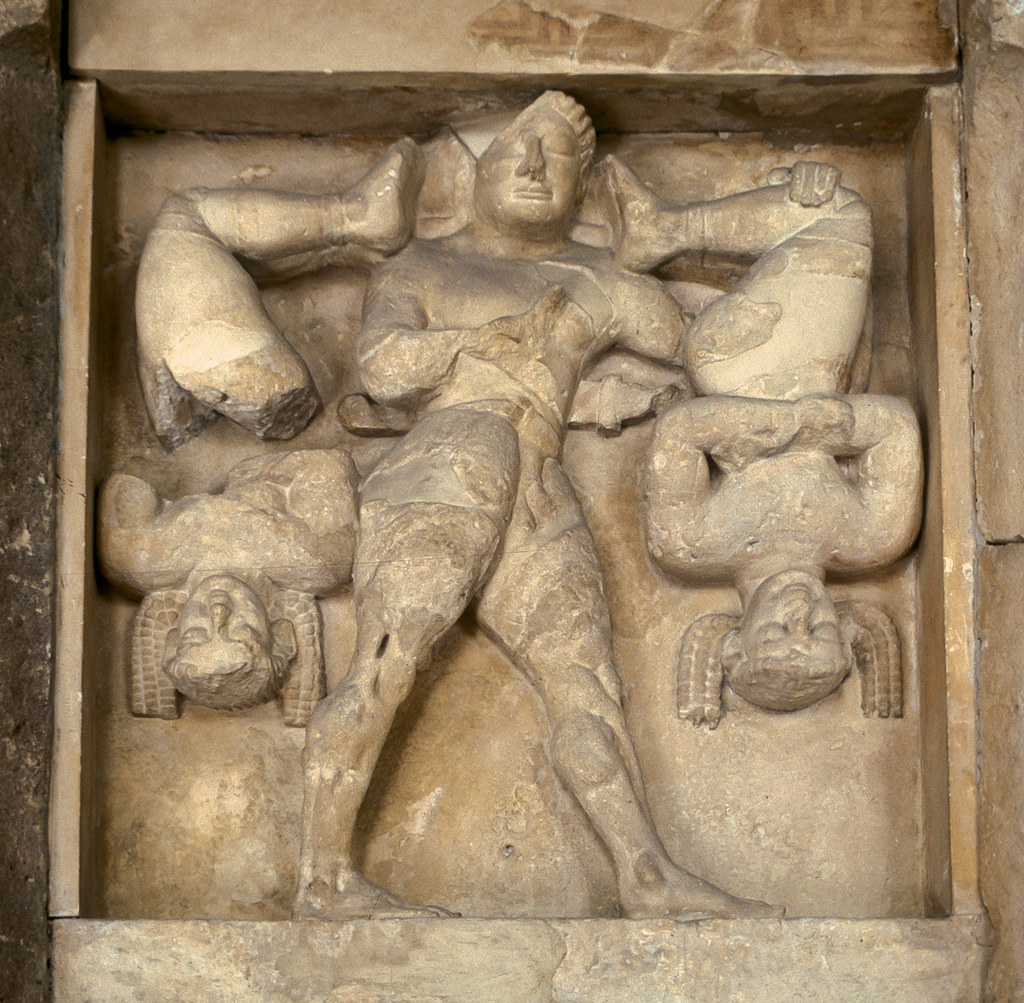
Name of Temple & Metope
Temple C at Selinus: Herakles and the Kerkopes
Herakles and the Kerkopes: Date & Period
600-550 BCE (6th Century Archaic)
Herakles and the Kerkopes: Notes
Narrative
The kerkopes are forest spirits that tried to steal Herakles’ weapons — he suspended them upside down as punishment but they amused him and so he freed them eventually.
Use of Space
Little blank background space and figures at full height
Spacing of figures fill gaps e.g. suspended limbs of kerkopes fill gap at Herakles’ waist: creates a somewhat geometric pattern
Lines
Pervasive vertical lines create a snapshotted still moment, rather than a scene of action
There is a small amount of diagonal in Herakles’ legs, which conveys a still moment within a moving scene
Miscellaneous
Figures are differentiated through their emotion: Herakles remains passive while the kerkopes smirk
Herakles is depicted with exaggerated musculature, evident in the thighs
Poses effectively construct the narrative however Herakles’ torso is twisted impossible
Egyptian influence — braided hair
Temple of Zeus at Olympia metopes: Date & Period
466-456 BCE (5th Century Early Classical)
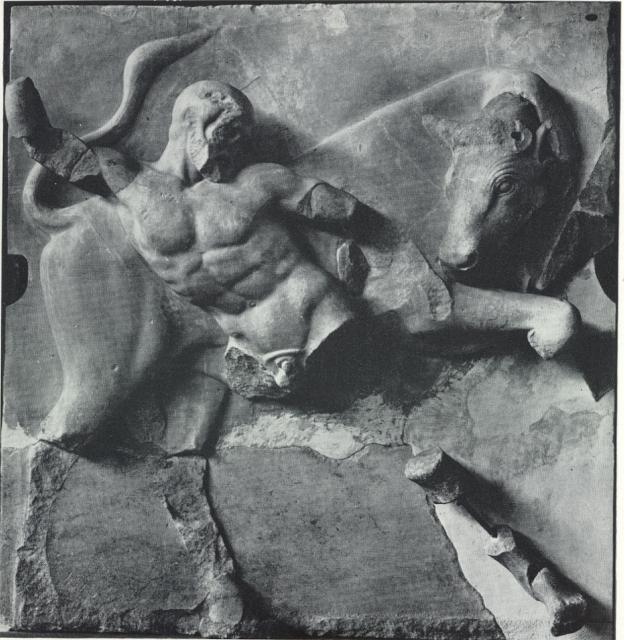
Name of Temple & Metope
Temple of Zeus at Olympia: Herakles and the Cretan Bull
Herakles and the Cretan Bull: Notes
Diagonal, mirrored poses and tense eye contact establishes a dynamic scene of conflict
Crossed diagonals would have filled all four corners of the pediment
Herakles displays heroic nudity: Iliac crest, Curiass Aesthetique, and severe look encapsulates a strong and ideal Greek hero
Herakles stands in front of the bull to display the musculature but also as symbolic of his victory
Herakles’ stretched torso and poised arm elevates him as a threatening opposition. The abdominals are dramatic but smoothed
Pertains to heroic idealism of the Early Classical period
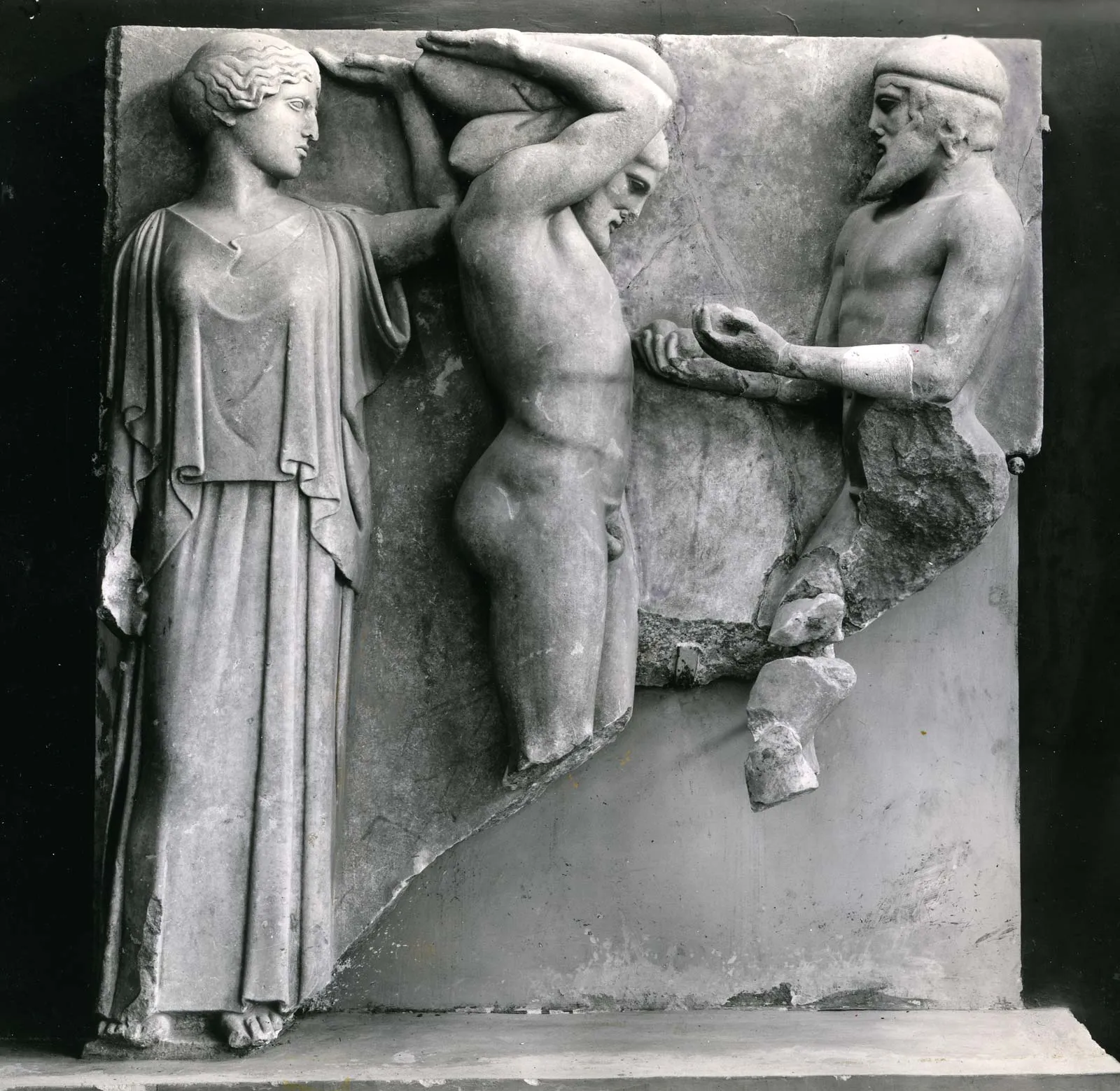
Name of Temple & Metope
Temple of Zeus at Olympia: Herakles and the Apples of Hesperides
Herakles and the Apples of Hesperides Metope: Notes
Athene:
Drapery falls loosely and naturally under raised arms, and layer around the torso: allows artist to display greater depth of skill (contrasts the rest of the figures’ nudity)
Lacks normal war gear: less violent scene
One arm raised behind and in support of Herakles’: minimal effort, as she is divine
Herakles’ limbs unstrained but he uses two arms, and his head is weighted under the heavens: shows he is strong, but not as strong as Athene
Vertical lines = still, less frantic scene: Herakles uses mental skill rather than physical labour
Figures subtly stand in different perspectives: front, side, and side-tilted to still reveal the male torso of Atlas
The spacing of the figures and Atlas’ outstretched arms fill the space of the metope

Name of Temple & Metope
Temple of Zeus at Olympia: Cleaning of Augean Stables
Cleaning of Augean Stables Metope: Notes
Herakles creates cross diagonals which fills space and juxtaposes Athene standing vertically with only one arm outstretched diagonally: frantic and mortal versus stable and divine
Both figures look towards the action, drawing the eye to it
Dynamic equilibrium in balanced X-pose of Herakles
Athene’s drapery alludes to one leg and creates columnar and catenary folding
How are the Temple of Zeus at Olympia metopes innovative?
Both Herakles and Athene age alongside the labours (shown through the beard and transformation from maiden to warrior) — however, there is little advancement to the depiction of females, and Herakles is still idealised.
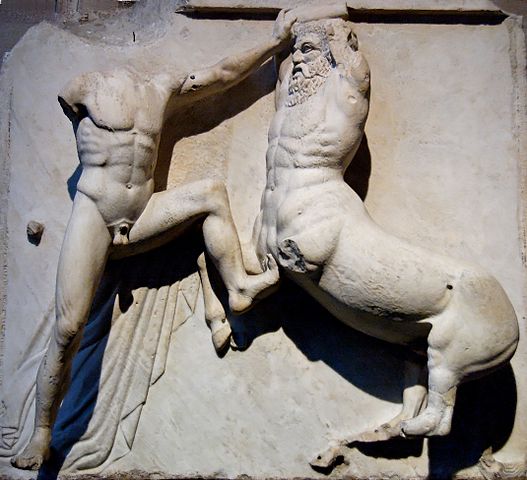
Name of Temple & Metope
Parthenon South: Metope 26
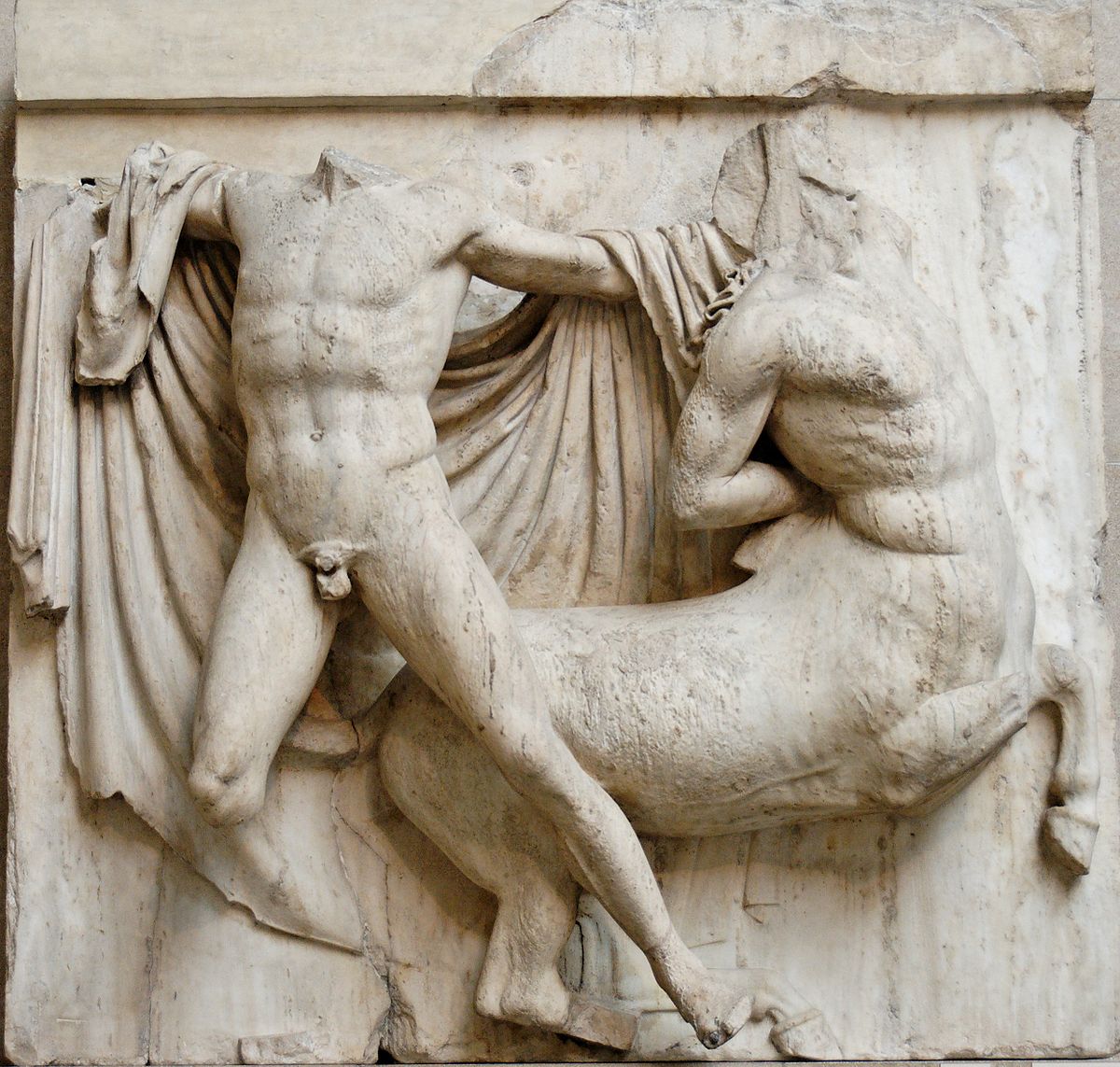
Name of Temple & Metope
Parthenon South: Metope 27
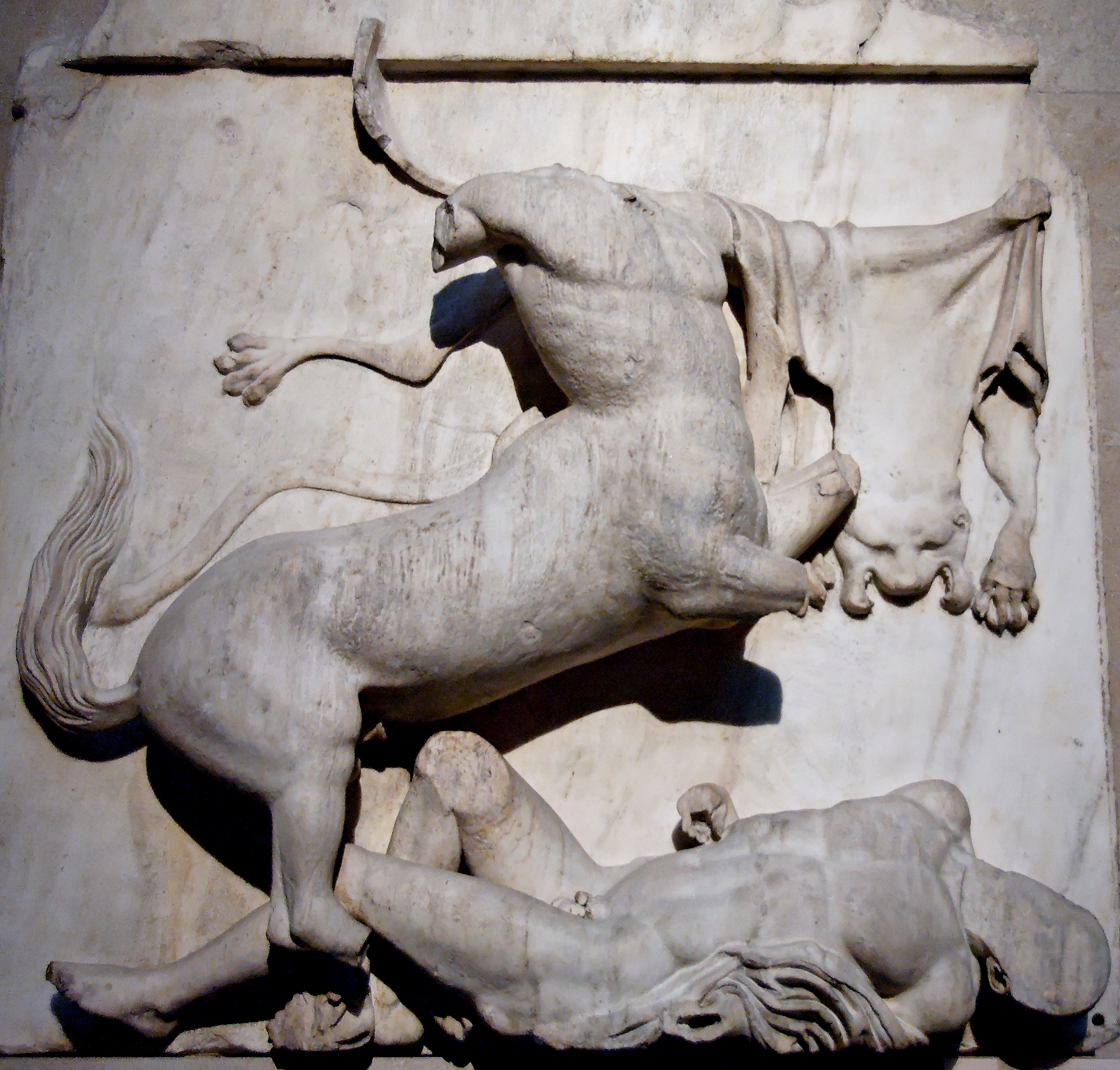
Name of Temple & Metope
Parthenon South: Metope 28
Parthenon Metope Themes
South: Centauromachy
North: Fall of Troy
West: Amazonomachy
East: Gigantomachy
Parthenon Metopes: Date & Period
447-442 BCE (5th Century High Classical)
Parthenon Metope 26: Notes
Musculature is shallowly etched & anatomy is unusual — centaur has no neck, short legs, and an elongated torso (probably edited to fit the space)
Drapery awkwardly falls from behind the lapith — does not effectively fill space nor create drama
Prevailing verticals is oxymoronic as an action scene
Lapith stands in an impossible pose: weight shifted incorrectly. The figures also make awkward contact.
Probably a freestanding sculptor as the anatomy is acceptable, but the composition is notably poor.
Parthenon Metope 27: Notes
Dramatic catenary folding of drapery draws the eye to the victorious lapith and fills space, showing both sculptural and compositional skill
Exaggerated musculature is evident and the lapith beholds heroic nudity infront of the centaur to display victory and strength
Parting diagonals in opposite directions fills space and creates high tension, conflict, and drama. The two also overlap which adds depth to the composition
The centaur appears rather short and stout, which again alludes to minor compositional struggle
Parthenon Metope 28: Notes
Very unique insight into the narrative, showing a prevailing centaur rather than lapith
The centaur leaping upwards with outstretched limbs creates foreboding power and fills space, while the lapith beneath fills space beneath said figure
Lolling head of lapith and curved torso is accentuated by the curved draper — antagonising. expression however is not seen as it was removed by Christians
The hide held by the centaur acts as an emblem of exoticism, adding to the prevailing depiction of centaurs as ostracised ‘others’.